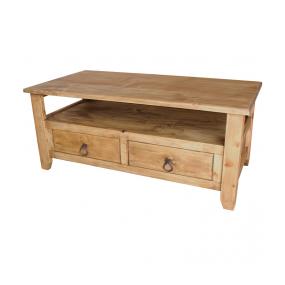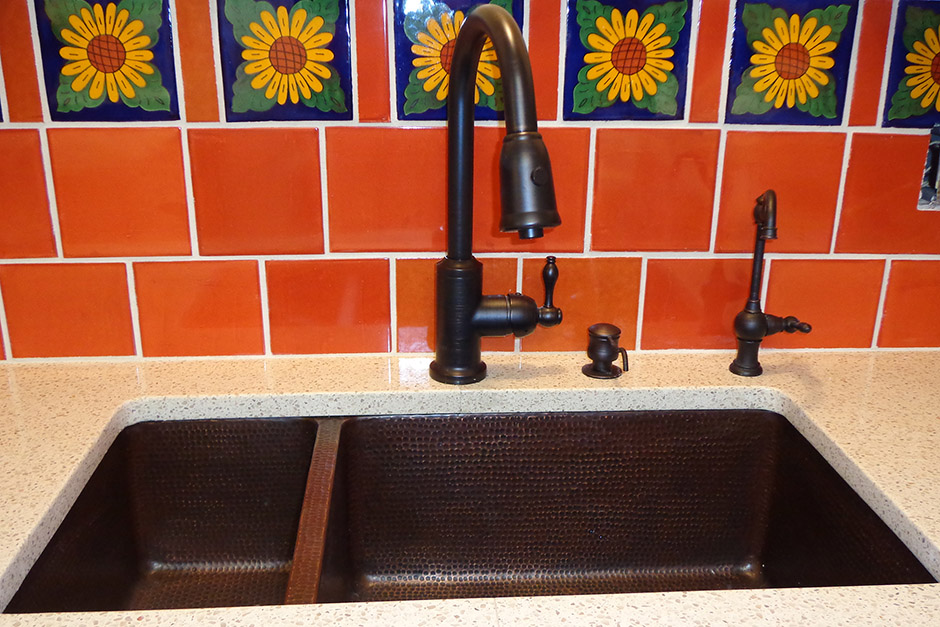Behind the Design
Origins of Colonial Mexican Furniture
October 21, 2009
The relationship between Spain and Mexico can be identified in nearly every aspect of Mexican culture. Perhaps it's best recognized through language and religion; however, handmade Mexican furniture represents centuries of craftsmanship and a strong influence of both native and Spanish elements. In order to appreciate the aesthetics of what is today predominantly rustic Mexican furniture, it is important to understand the origins of colonial Mexican furniture.
The Spanish conquest of Mexico in the early 16th century marked the beginning of a colonial period that would last for nearly 300 years. Following the conquistadors' success, Spanish monks set out to bring Catholicism and the European idea of a civilized society to their newly acquired land. As churches and monasteries were constructed, craftsmen were recruited from the old world to decorate and furnish the new buildings. At first, the style of furniture they produced was little more than a replica of European décor, but it wouldn't take long for new world influences to make their mark.
Once the colonial government was established, craft guilds were quickly formed to regulate the quality and style of Mexican furniture, as well as the requirements for membership into the guild. The regulations imposed on furniture craftsmen were generally limited to urban areas and religious institutions. Here, the accepted style usually included detailed carvings and designs for tables, chairs, armoires and chests. Carpenters also enjoyed the luxury of choosing from a variety of woods such as mesquite, walnut, cedar and cypress when carving lyre-leg refectory tables and lavish altars for churches.
In provincial towns throughout rural Mexico, guild laws were more difficult to enforce. The formal, artistic furnishings produced in colonial cities needed to be more utilitarian in the countryside. Ornate furniture styles often proved too impractical in this rugged environment, and craftsmen frequently lacked the sophisticated tools and wood varieties to produce traditional Spanish-style furniture. Due to these limitations, Mexican furniture produced in rural settings became considerably more rustic than the furniture produced in urban settings. Elaborately carved armoire panels were converted to classic flat-panels, lyre-leg tables were replaced by A-frame legs, and the use of pine compared to more expensive woods steadily increased.
Restrictions and regulations imposed by the furniture guilds were lifted altogether when Mexico achieved her independence in 1821. Although the traditional colonial furniture designs remained, craftsmen were now free to implement more creativity and variety into their work. Because of this, the production of Mexican furniture became less labor intensive, more rustic, and, consequently, more affordable to the public. Lighter wood such as Mexican cypress, white pine and heart pine were increasingly used, allowing for easier transportation and lower costs. With these new innovations, the furniture that was once reserved for statesmen, land owners and the church became staples of the Mexican home.
Today, although the heart of Mexican furniture production remains in densely populated cities like Guadalajara, Puebla and Mexico City, regional differences have become more and more apparent over time. In the northern state of Chihuahua, a minimalist design emerged and, due to the dry climate, furniture is often painted to preserve the wood. In the states of Jalisco and Guanajuato, the highly detailed colonial furniture remains, largely preserved with the use of hardwoods like mesquite and cypress, while rustic pine furniture from the southern state of Oaxaca is known for gouge-carving, single-slab tabletops and A-frame legs.
Regardless of regional nuances, colonial Mexican furniture remains stylistically preserved. Even today's rustic counterparts continue to reflect the colonial world from which they originated. For the most complete selection of authentic Mexican furniture available anywhere on-line, visit our furniture page and bring a little piece of Mexico into your home today!
Let's Get Social - Join La Fuente Imports for interior design inspiration on Facebook, Pinterest, Instagram, Twitter and Houzz.









